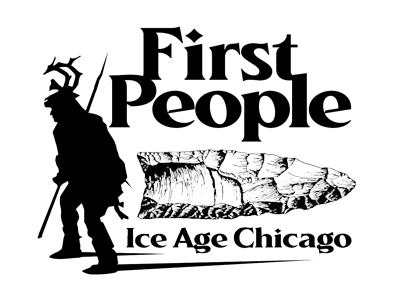Ice Age Chicago

Glaciers, Lakes, and Landscapes
Ice Age Chicago was a dynamic, recently deglaciated landscape at the end of the Pleistocene. When human foraging groups first entered the region, they would have seen a relatively open spruce parkland with no modern analog. As the landscape evolved, people would have had to adapt to rapid climate change, shifting plant and animal communities, isostatic rebound following the retreat of continental ice sheets, and rising and falling water levels in Lake Michigan that opened up (or submerged) large areas around modern day Chicago.
What would this early landscape have looked like? How did it change over time as people populated Ice Age Chicago?

Investigating a Cold Case:
tracking Ancient climate change with modern data
While the archaeological record of early groups in Ice Age Chicago is sparse, one of the strengths of the region is a robust record of environmental indicators. Archaeologists and other scientists can use things like pollen cores, sediment records, preserved plant remains, and other lines of evidence to investigate past environments and how they changed over time.
What can modern evidence from lakes, bogs, glacial moraines, and other contexts tell us about ancient climate in the region?

Ice Age Mammals
The first people to arrive in northeast Illinois 13,000 years ago would have encountered an Ice Age bestiary that has no modern equivalent. Extinct animals such as mammoth, mastodon, giant beaver, and stag moose lived alongside animals like caribou and peccary that are still around today, albeit in much different modern ranges. Large, extinct predators like sabertooth cat, short-faced bear, and dire wolf also still roamed the Ice Age landscape. Recent analysis and dating of animal remains from the region helps us investigate what animals overlapped with the first people in Ice Age Chicago, and for how long.
